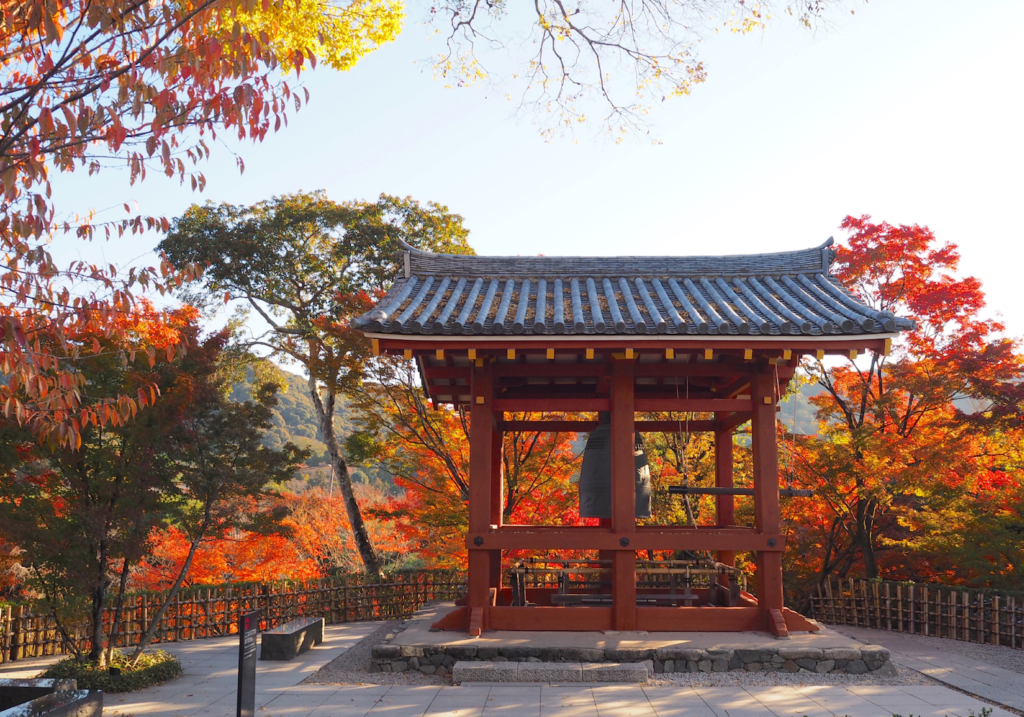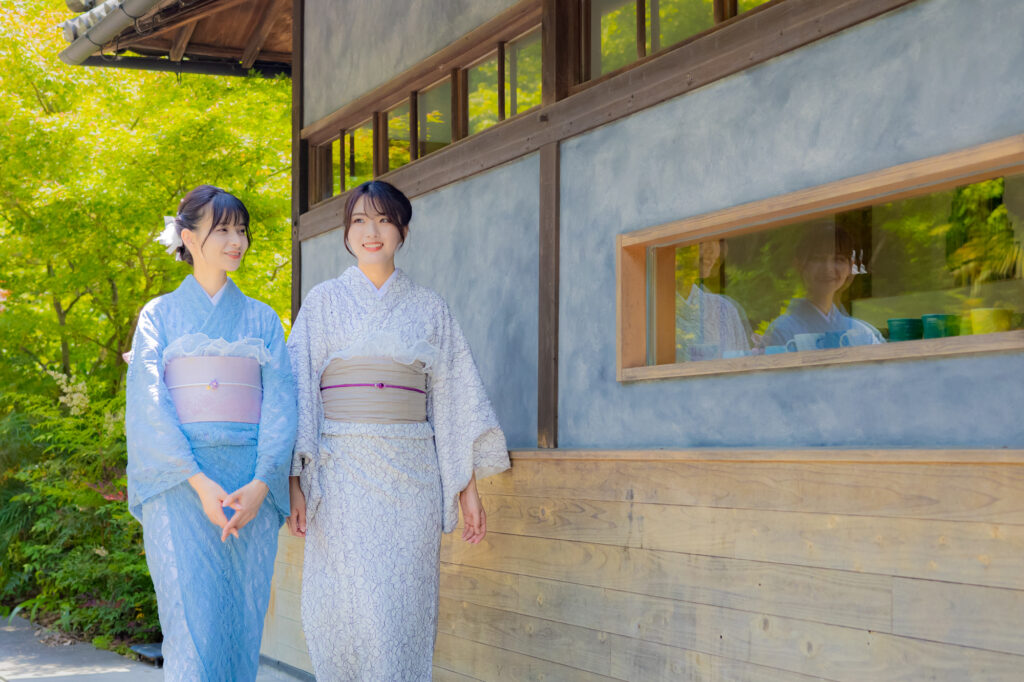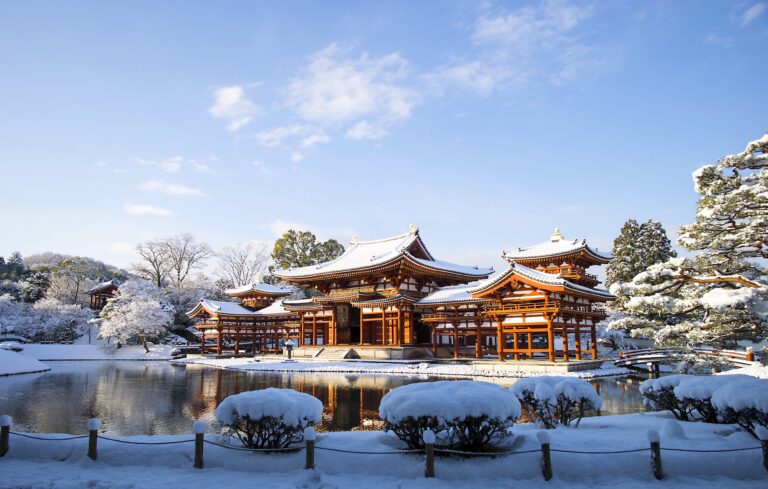Photo provided by: Byodo-in Temple
Located in Uji City, Kyoto Prefecture, Byodoin Phoenix Hall is one of Japan’s representative historical buildings, a Buddhist temple built in the Heian period.
Its beautiful garden, architecture, and historical background continue to attract visitors.
In particular, visitors wearing kimono will be able to have a deeper experience of Japanese culture.
Here are some details about the attraction of Byodoin Phoenix Hall, its sightseeing highlights, and why a visit in kimono is especially recommended.
History and Overview of Byodoin Phoenix Hall
Byodoin was built in the Heian period (794-1185) as a villa of Michinaga Fujiwara, the chief advisor to the Emperor, and was reconstructed as a temple by his son Yorimichi Fujiwara in 1052.
The Phoenix Hall is its symbolic building and has become a cultural icon in Japan, so much so that it is now depicted on the 10-yen coin and the 10,000-yen bill.
The building’s distinctive feature is that it is shaped like a phoenix with its wings outstretched, giving it the name Phoenix Hall because of its elegant appearance.
Inside the Phoenix Hall is a statue of Amida Nyorai, created by the Heian-period Buddhist priest Teicho, which is designated as a National Treasure.
The entire building is a masterpiece of Japanese wooden architectural techniques and is also registered as a national treasure.
The surrounding garden, known as the “Pure Land Garden,” was designed based on the Pure Land beliefs of the Heian period and is known for its different seasonal beauty.
Charm of visiting in kimono
Byodoin Phoenix Hall is characterized by the harmony of its beautiful architecture and nature, but you can experience its charm even more deeply by visiting in a kimono.
Kimono is a traditional Japanese costume, and its beautiful design and comfort give it a dignity befitting a historical place.
By visiting Byodoin dressed in kimono, you will feel as if you yourself are a part of Japanese history and culture.
In particular, a photo of you in kimono with a historical building like Byodoin or a Japanese garden in the background will be an exceptional memory.
There are many kimono rental stores in Uji City, where tourists can easily rent a kimono and enjoy sightseeing.
Uji is also an area that retains the traditional streetscape of Kyoto, so strolling around in kimono is a tasteful experience.
While touring temples and gardens, visitors can enjoy a sense of history and feel as if they are stepping back in time to the Heian period (794-1192).

Highlights of Heiyo-in Phoenix Hall
Phoenix Hall
The Phoenix Hall itself is the main attraction of Byodoin.
It is one of the most famous Buddhist buildings in Japan, and its unique form is beautiful from every angle.
In particular, the reflection of the Phoenix Hall in the pond is breathtaking, and combined with the seasonal scenery, it creates a fantastic atmosphere.
Especially during the cherry blossom season and the season of autumn leaves, many tourists visit the temple to enjoy the magnificent scenery.
Amida Nyorai Statue
The statue of Amida Nyorai enshrined in the Phoenix Hall is highly regarded as a masterpiece of Buddhist sculpture.
This statue was created by the Buddhist priest Teicho, whose graceful and serene countenance gives the viewer a profound sense of peace and inspiration.
The Amida Nyorai statue symbolizes the world of Paradise, and it is said that the entire Phoenix Hall and its garden embody the Buddhist world of the Pure Land.
Hoshokan
A museum called Hoshokan is located on the grounds of Byodoin Temple.
Here, visitors can learn about the history of the Phoenix Hall, architectural techniques, and the process of creating Buddhist statues.
In particular, a replica of the phoenix that sits on the roof of the Phoenix Hall, as well as Buddhist statues and ornaments designated as Important Cultural Properties are on display.
By visiting the Hoshokan, visitors will gain a deeper understanding of the historical and cultural background of Byodoin.
Jodo Garden
The garden surrounding the Phoenix Hall is known as the Jodo Garden and was created during the Heian period.
This garden is a recreation of the Buddhist paradise world, with a beautiful arrangement of ponds, bridges, and lush greenery.
The reflection of the Phoenix Hall in the pond is particularly fantastic, and the entire garden looks like a painting.
The garden, which shows different expressions depending on the season, is beautiful with cherry blossoms in spring and autumn leaves in fall, and visitors can enjoy its charm in any season.
Tour of Tea Houses
Uji is famous for its matcha.
When visiting Byodoin Temple, be sure to stop by one of the nearby teahouses.
Along the Uji River, there are many tasteful teahouses where you can enjoy delicious matcha green tea and Japanese sweets.
Enjoying a cup of matcha while dressed in a kimono is a uniquely Japanese luxury experience.
Uji’s matcha, in particular, is highly acclaimed throughout Japan, and its aroma and taste are exceptional.

Points to keep in mind when visiting the temple in kimono
When visiting Byodoin Temple in kimono, there are a few points to keep in mind to make your visit more comfortable.
Ease of walking
Since your stride will be narrower when wearing a kimono, you will be expected to walk at a slower pace than usual.
The Byodo-in Temple grounds are large, and it takes some time to visit the gardens and museum, so it is important to choose footwear that is comfortable to walk in.
In particular, if you wear geta or zori, it is advisable to practice in advance, as it may be difficult to move around for a long time if your feet are not accustomed to it.
Choosing Kimonos that Suit the Seasons
Kyoto’s climate changes with the seasons.
Spring and fall are pleasant, but summer is very hot and winter is cold.
Therefore, it is important to choose a kimono that matches the season.
Light yukata or light kimonos are recommended for summer, while layered kimonos with good protection against the cold are recommended for winter.
Also, consider changing the material of tabi socks and obi cords depending on the weather for comfort.
Use of rental service
Our kimono rental service makes it easy to rent a kimono.
Our rental plans for tourists include dressing services, so even beginners can enjoy wearing kimonos with ease.
Furthermore, luggage storage service is also available so that you can enjoy sightseeing with a light load.
Summary
Byodoin Phoenix Hall is a place that symbolizes Japanese history and culture, and you can feel its beauty even more by visiting in kimono.
Byodoin, with its many attractions such as the Phoenix Hall, the statue of Amida Nyorai, and the Pure Land Garden, can be enjoyed in all four seasons.

